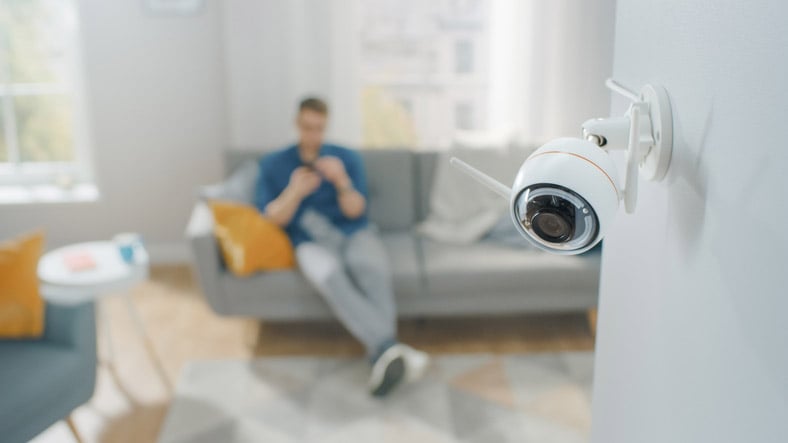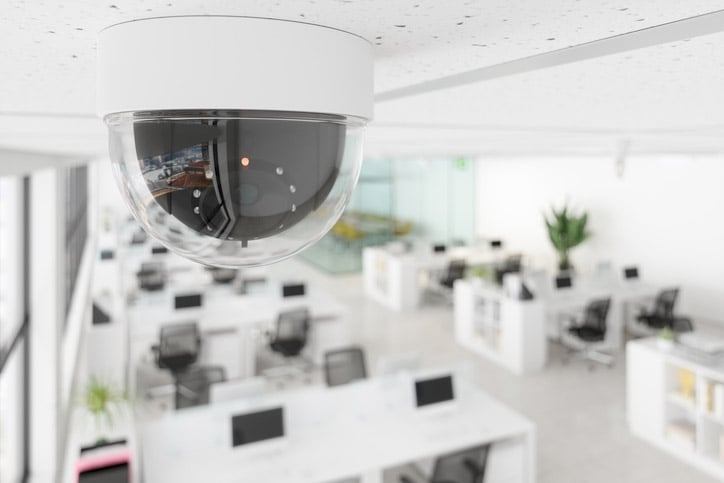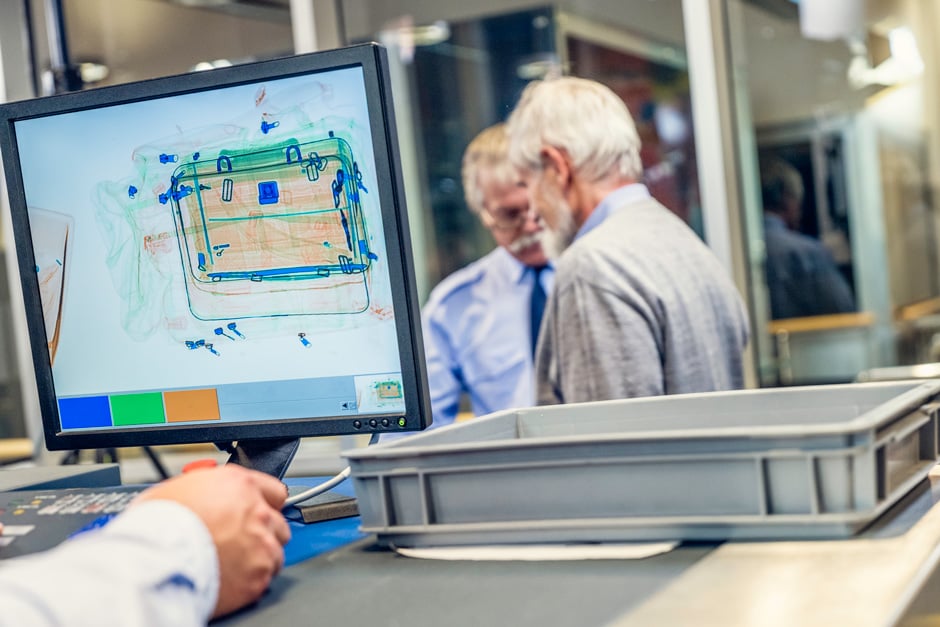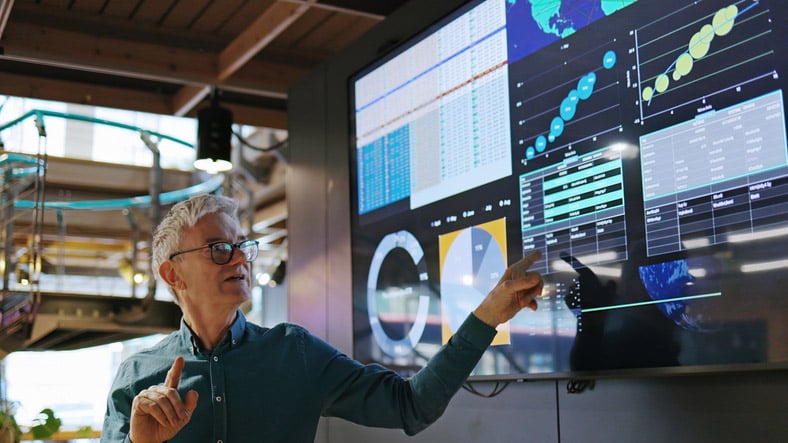Most businesses today have some form of surveillance in place. CCTV cameras are the most obvious, but access control systems, alarm monitoring, and even audio recording devices are increasingly common.
For many business owners, these systems are seen as a straightforward security measure: a way to protect assets, monitor activity, and provide evidence if something goes wrong. But once installed, they are too often treated as ‘set and forget’. In reality, it is ultimately the business owner or manager who remains accountable for how the system is used.
Whether it’s understanding what areas are under coverage, who has access to the recordings, or how long those recordings are stored, the responsibility rests with those who own and operate the business. And with that responsibility comes both opportunity and risk. Done well, surveillance can be a powerful tool to safeguard people and property. Done poorly, it can become a liability that exposes the business to legal, ethical, and reputational consequences.
The Legal Context – Clear Rules and Grey Areas
One of the challenges with workplace surveillance is that the rules aren’t always clear. In some states, legislation clearly defines how surveillance can be used, including notice requirements and limitations. In New South Wales, for example, both the Workplace Surveillance Act 2005 and the Surveillance Devices Act 2007 outline specific conditions and restrictions around the use of cameras and other monitoring tools. In other parts of Australia, the rules are more general, falling under privacy laws or broader workplace obligations, without the same level of detail.
For business owners, this creates an important reality: even if the law in their state is vague, responsibility still exists. Surveillance can affect employee rights, customer expectations, and community trust. Ignorance of the rules does not protect a business if a complaint is made or if surveillance practices are challenged. The safest approach is to assume that transparency, fairness, and proportionality should guide how surveillance is implemented and used, regardless of location. In other words, don’t wait for the fine print of legislation to tell you what is right or wrong — take proactive ownership of the system and how it affects people.
Understanding the System – More Than Just Cameras on a Wall
It is easy to think of CCTV as simply “having cameras.” But the reality is far more complex. Business owners need to understand exactly what the system is designed to do and, just as importantly, what it cannot do.
Which areas are covered, and which are not? A camera in the foyer might capture everyone entering the building, but does it also cover the rear entrance where deliveries are made? Equally important are footage quality and retention: is it clear enough to identify people, and is it kept long enough to be useful if an incident is discovered weeks later?
Access is another crucial factor. Who can view the live feed or recordings, and how is that access granted or revoked? Too often, multiple staff have unrestricted access simply because it is convenient. Yet with every additional person who can log in, the risk of misuse or accidental disclosure increases.
These may seem like small operational details, but they are the foundation of responsible surveillance. A system that is installed but not properly understood is almost as ineffective as having no system at all.

Notifications and Transparency – Informing Staff, Customers and Contractors
Surveillance should never be hidden in the shadows. Transparency is a key part of building trust and meeting both legal and ethical expectations. Staff need to know if they are being recorded, and in many jurisdictions, employers are required to give formal notice. This isn’t just about compliance — it’s about respect for the people who work in the business every day.
Customers and contractors also deserve clarity. Simple signage at entry points and around the premises makes it clear that surveillance is in place. This not only supports transparency but can also act as a deterrent to poor behaviour. More importantly, it avoids the perception of secrecy, which can damage relationships with staff and clients alike.
Transparency doesn’t mean sharing every detail of how the system works, but it does mean avoiding recordings in spaces where people would not reasonably expect surveillance. This openness is often the difference between surveillance being seen as protective or as a tool of mistrust.
Human Resources and Privacy – Surveillance Beyond Security
Surveillance systems are often installed with the goal of protecting people and property, but their role has steadily expanded into other areas of workplace management. It is increasingly common for CCTV footage to be used in HR contexts such as performance management, investigations into misconduct, or resolving disputes between staff.
There is a fine line between legitimate use and overreach. If surveillance is used as a tool for constant monitoring or as the first step in addressing performance issues, it risks creating a culture of mistrust and eroding morale.
Employment contracts and workplace policies play a vital role here. They should set clear boundaries about how surveillance can and cannot be used, ensuring the business is protected without unnecessarily infringing on staff privacy. The aim should be to balance accountability with respect, using surveillance as a last resort rather than a default method of management.

The Technology Shift – AI, Facial Recognition, and Expanding Responsibility
Surveillance technology is not standing still. What once consisted of simple fixed cameras now includes advanced features powered by artificial intelligence. Facial recognition, behavioural analysis, and automated alerts are no longer futuristic concepts — they are increasingly built into the systems available to everyday businesses.
These tools offer powerful benefits. AI can flag unusual activity in real time, highlight potential risks, or even recognise individuals who are banned from a premises. But with these benefits comes an expanded layer of responsibility. Business owners must think not only about whether these tools are legal, but also whether their use is ethical and appropriate. Just because a system can identify and track staff members or customers does not always mean it should.
This evolution also changes community expectations. Communities are more sensitive than ever to how images and data are used. Misusing advanced technology — or using it without transparency — can erode trust faster than any break-in or theft. In short, the more powerful the surveillance, the greater the responsibility on those who operate it.
Cyber Security Risks – The Unseen Vulnerabilities
While most business leaders recognise the need to protect their computers and mobile devices, surveillance systems are often overlooked in the cyber security conversation. This is a serious blind spot, because the technology used in CCTV and other surveillance devices is rarely as advanced or secure as modern IT systems.
In many cases, the risks are alarmingly simple: systems left on default passwords, remote access enabled through open ports, or ignored software updates. Each creates an open door for unauthorised access.
The consequences of a breach can be more damaging than many business owners realise. Hackers could gain access to live video feeds, allowing them to watch staff routines, track customer activity, or even identify when a building is unattended. They might capture alarm codes as they are entered into keypads, or view confidential information displayed on staff computer screens. In the wrong hands, surveillance footage isn’t just a privacy issue — it can be a roadmap for crime.
The good news is that most of these vulnerabilities are preventable with basic awareness and good practice. Changing default passwords, controlling access rights, and working with reputable providers who understand cyber security can dramatically reduce the risks. But this only happens if business owners and managers take responsibility, rather than assuming the technology will look after itself.
Privacy and Confidentiality – Beyond Just Footage
When people think of CCTV risks, they usually imagine someone gaining access to recorded video. But the risks of surveillance extend beyond the footage itself. Cameras can inadvertently capture sensitive or confidential information in ways that aren’t immediately obvious.
For example, a camera positioned to cover a reception desk might also record the screens of computers or mobile devices being used by staff. That could expose customer records, financial data, or personal communications. Similarly, cameras overlooking alarm panels or entry keypads may capture the codes being entered, creating opportunities for unauthorised access.
Cameras can also capture conversations or private activities in places where individuals would not expect monitoring. Even unintended, this can still breach privacy. These examples highlight why surveillance planning is not just about ‘where do we put the cameras’ but also ‘what else might they see, and what risks does that create.’

Everyday Surveillance – Relating to Home and Vehicles
It’s not only businesses that rely on surveillance. Many people now have cameras in their homes — from smart doorbells to backyard systems — and dashcams in their vehicles. Convenient and affordable, they carry the same responsibilities and risks.
A hacked home system can reveal whether someone is at home or away, creating opportunities for crime rather than preventing it. Dashcams, meanwhile, might inadvertently record sensitive locations when vehicles enter secure buildings or capture images of where spare keys or lockboxes are kept. While the scale is smaller, the principle is the same: surveillance can be a valuable tool, but only if it is managed responsibly.
Surveillance as Both Benefit and Liability
Surveillance has become so commonplace that it is often taken for granted. Cameras are installed, the system is switched on, and most people rarely think about it again. Yet this sense of routine can be dangerous. Surveillance is invaluable in responding to and investigating incidents after they occur. For businesses, this can be either a tremendous benefit or a significant liability.
The difference lies in awareness and responsibility. Business owners and managers do not need to be security experts, but they do need to understand what their systems are capable of, what they are not, and how they impact the people who interact with them. From legal obligations and HR considerations to cyber security vulnerabilities and privacy risks, surveillance is not just a technical matter. It is an organisational responsibility that touches every part of a business.
Handled well, workplace surveillance builds trust, protects people, and safeguards assets. Handled poorly, it can damage reputations, create compliance issues, and even provide opportunities for crime. The choice between those outcomes rests with those who control the systems.
Taking Responsibility for Your Surveillance
If you’re a business owner or manager, take the time to look closely at your surveillance systems. Ask yourself what they are recording, how that data is being managed, and whether the risks have been properly considered. Don’t assume that because the system was installed by a professional, everything is being handled correctly. Ultimately, the responsibility sits with you.
At Asset College, we understand that most businesses don’t have in-house security teams to manage these responsibilities. That’s why we offer education and support to help you build the awareness you need to self-manage within your own limits and requirements. If you’d like to better understand how surveillance impacts your business and what steps you can take to manage it responsibly, reach out — we’re here to help.
Certis Aviation Program Lands Naveen His Dream Job
Naveen Henry always had an interest in aviation, but he spent years exploring different careers. He studied mechanical engineering and then worked in a variety of roles such as aircraft assembly, sales and service of high-end medical imaging devices, IT Application development, support & management and most recently as an IT Project Officer for an NSW agency.



